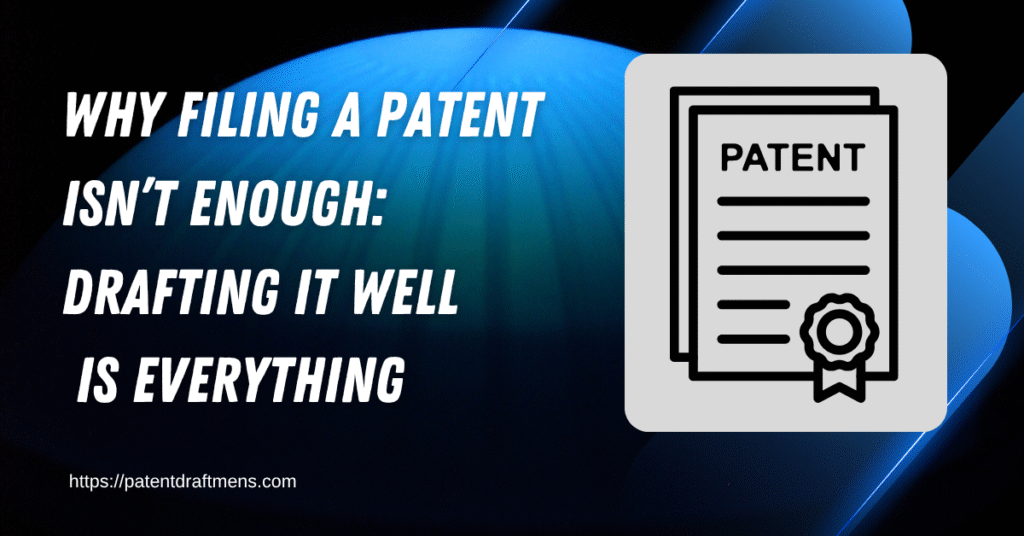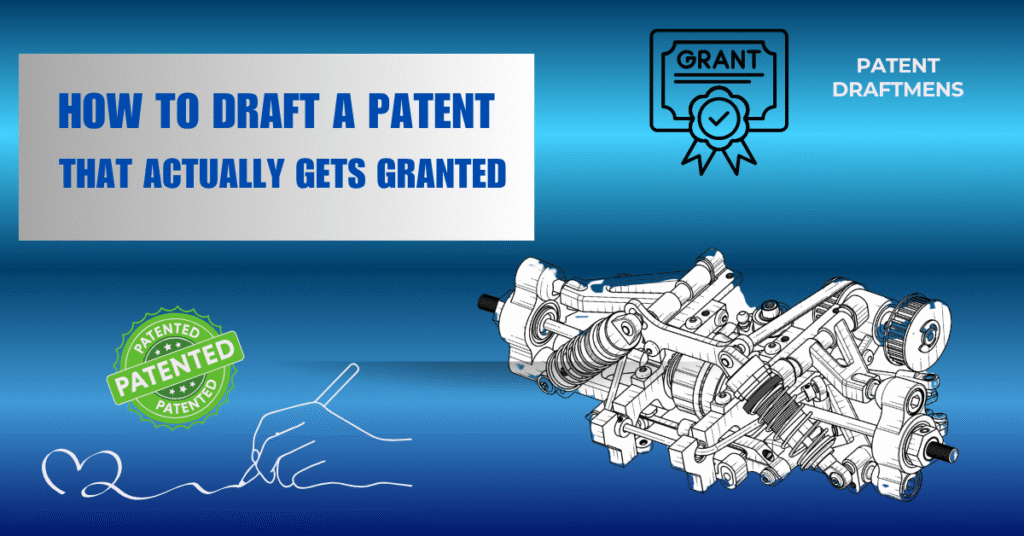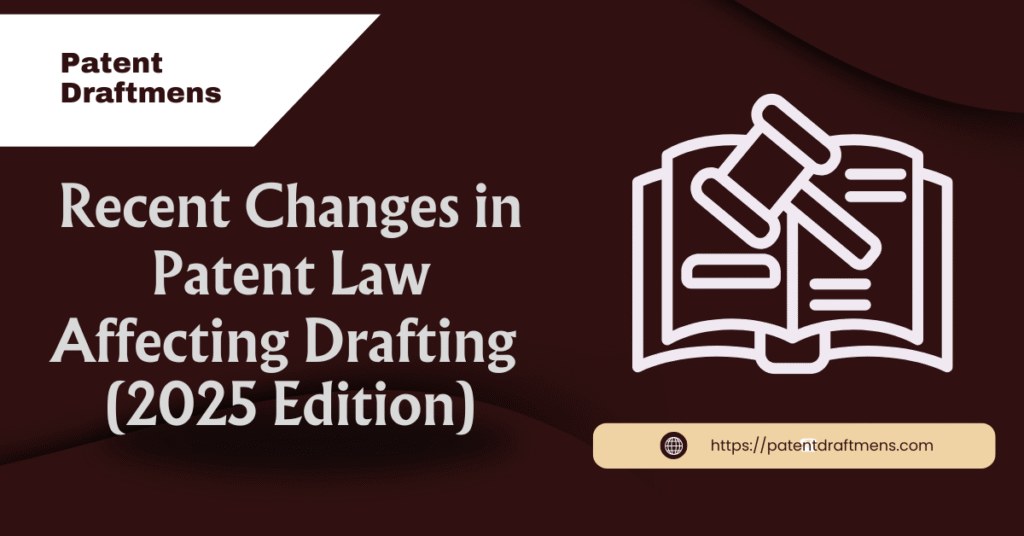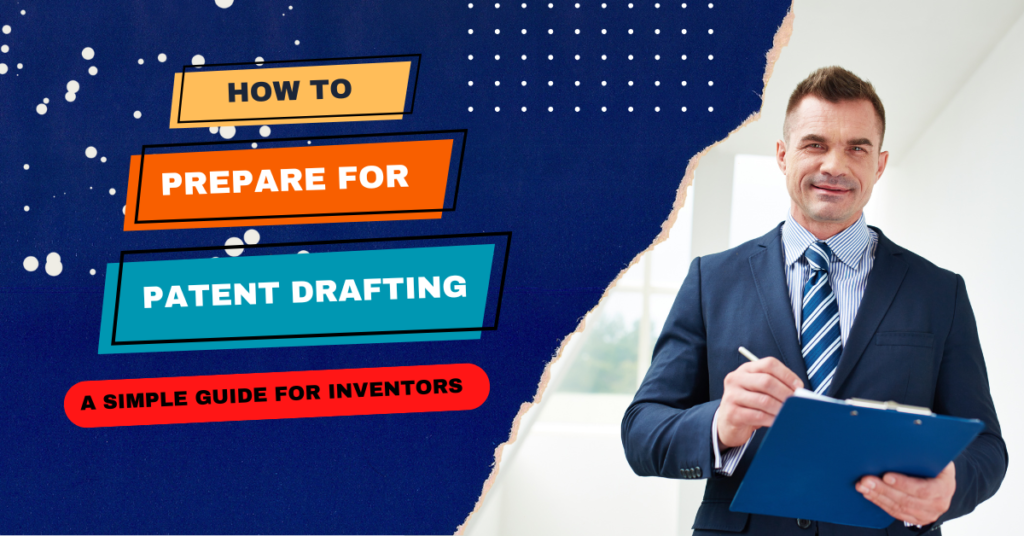Why Filing a Patent Isn’t Enough: Drafting It Well Is Everything
Introduction: So, you’ve come up with a new idea. Maybe it’s a cool gadget, a smart tool, or a better way to do something. The first thing most people think is, “I should file a patent!” And yes, that’s a smart move. A patent helps protect your idea. It keeps others from copying it. It can even make your business stronger. But here’s the truth: Just filing a patent is not enough. What really matters is how well your patent is written. A strong draft is what gives your idea true protection. In this blog, I’ll explain—like a friend—why good drafting matters, what makes a patent draft strong, and how you can do it right. First Things First: What Does “Filing a Patent” Mean? Many people think filing means their idea is already safe. But that’s not the full picture. Yes, once you file, the date is locked in. That’s called a priority date. But the real protection depends on what’s inside your draft. If your draft is weak, unclear, or missing key parts, it won’t help much. That’s why the draft matters more than the act of filing. What Is a Patent Draft, Really? Think of your draft like the instruction manual for your idea. It should explain: What your invention is How it works What parts it includes What makes it new or different A good draft: Protects your idea in court Makes your invention easy to understand Gives your business a valuable asset What Happens If the Draft Is Bad? Even the best ideas can fail if the draft is not written well. This happens a lot. Let’s break it down: 1. Your Patent Gets Rejected If your draft is vague, missing details, or not clear enough, the patent examiner can reject it. They might say it’s not “enabled” or that it’s not clear what your invention really is. Fixing this later can cost time and money—and sometimes, you have to start over. 2. Easy for Others to Copy Let’s say you invent a new kind of bottle. But your patent draft only talks about a version with a plastic cap. Someone could use a metal cap or a different locking system—and dodge your patent. A strong draft covers many variations. It thinks ahead. It closes loopholes. 3. Weak in Court If someone copies your invention and you go to court, the judge will look at your patent draft closely. If your wording is too tight, too loose, or unclear, you might lose protection. Courts don’t guess what you meant—they read exactly what you wrote. 4. Scares Away Investors People who want to invest in or buy your invention will read your patent draft. If it’s not written well, they may think it’s weak or not worth protecting. A sloppy draft sends the wrong message. It makes your idea look less serious—even if it’s great. So, in short, a bad draft can: Delay your patent Let others copy you Weaken your legal protection Cost you deals and money What Makes a Patent Draft Strong? Let’s break it down: 1. Clear Language Use simple, technical words. Don’t add marketing fluff. Keep it clean. Bad: “This amazing system improves everything.”Good: “The system has a motor that shifts the blade from left to right.” 2. Full Explanation Don’t just say what your invention does. Say how it works. Give all the parts. Talk about sizes, materials, steps, and examples. If it’s software, show how the data flows. If it’s a machine, explain every moving part. 3. Strong Claims Claims are the most important part of the draft. They say what your patent protects. If it’s not listed in the claims, it’s not legally covered. Write claims that are broad enough to stop copycats, but clear enough to get approved. 4. Easy to Understand and Rebuild Your draft should help someone in your field rebuild the invention without guessing. This is called “enablement.” Also, share your best version of the invention. That’s called the “best mode.” 5. Use Diagrams Even rough sketches help. Add labeled drawings, flowcharts, or simple figures to show what you mean. From Filing to Drafting: What You Should Know Now you know why drafting is so important. Here’s how to do it right: Step 1: Do a Search First See if anyone has already patented something like your idea. Use tools like: Google Patents Espacenet USPTO site This helps you: Write stronger claims Avoid wasting time Save money Step 2: Talk to a Drafting Expert If you’re not trained in patent writing, get help. Draftsmen or agents know the rules and the right way to write. Each country has different rules, so choose someone who knows your region. Step 3: Share All the Details Give your expert everything: Diagrams Data Use cases Variations More input = better draft. Step 4: Review Before You File Double-check the whole thing: Are the drawings clear? Are the key parts covered? Are the claims strong? A second look can save you big problems later. Mistakes to Avoid Many people mess up the same way. Don’t do this: Using vague words: Like “better” or “cool”—they mean nothing. No drawings: Always add visuals. Too narrow claims: Don’t box yourself in. Skipping the review: One typo can cost you. Why It’s Worth Doing Right Writing a strong patent draft takes time. It costs a bit more. But it gives your idea power. A good draft helps you: Get the patent faster Keep others from copying Attract investors Make more money Win in court if needed Final Thoughts Filing a patent is just the start. A weak draft gives you weak protection. A strong draft gives you real power. It protects your idea, helps you grow your business, and scares off copycats. So remember: Keep it clear Cover all parts Write strong claims Think ahead If you need help, ask. Getting it right now saves you a lot later.
Why Filing a Patent Isn’t Enough: Drafting It Well Is Everything Read More »






